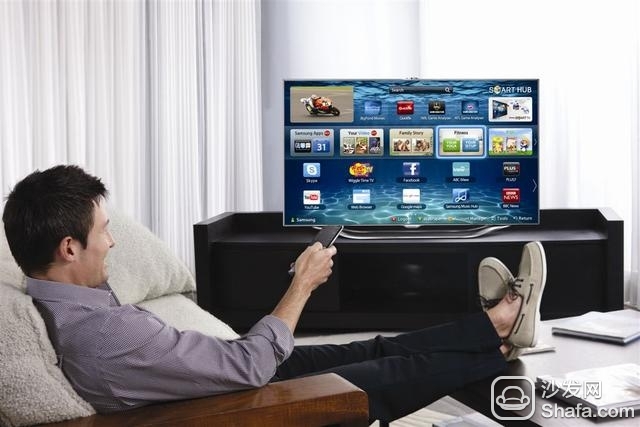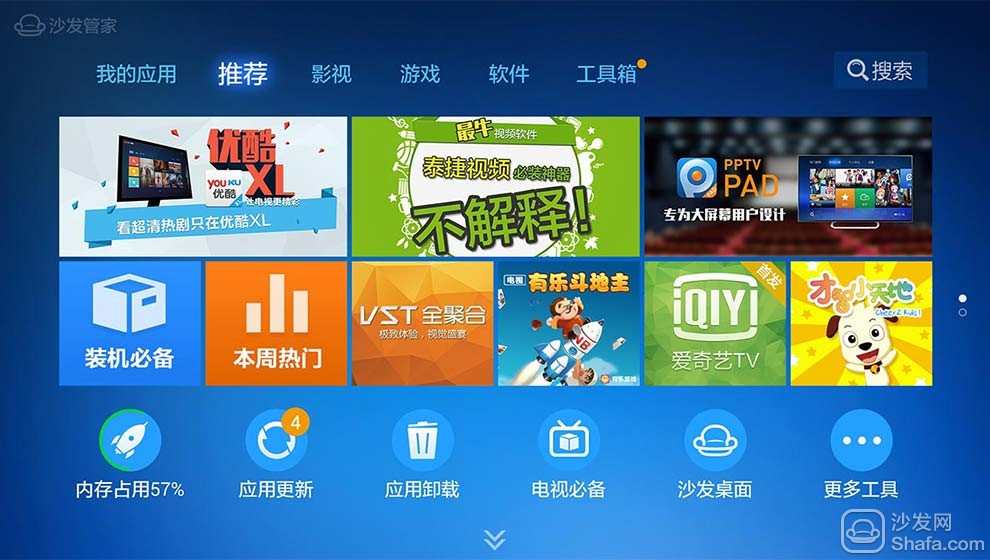
Recently, Konka teamed up with Tencent and Galaxy (Internet TV licensees) to jointly launch the Internet-smart TV "T60 Super TV," fully integrating Tencent's platform resources and expanding the value of the smart TV's entrance. This unquestionably triggered the first shot of deep integration of Internet resources by traditional home appliance manufacturers in 2015.
In the past two years, no household electrical appliance manufacturers have ignored the impact of LeTV and Xiaomi Internet companies on the traditional industries. Skyworth, Hisense, Haier, Konka, TCL and other domestic manufacturers all actively promoted the Internet transition last year and tried to use new products. , patterns and user experience subvert and reshape the appliance industry.
Previously, TCL proposed the "double +" Internet transformation strategy of smart + Internet, product + service; Konka proposed an easy strategy and released the "one-piece two-wing" plan; Skyworth announced the implementation of the "dual brand" strategy of offline Skyworth and online Coocasia. And e-commerce cool open level to the future development of smart TV...
However, the data show that in 2014 the domestic color TV market sales of about 45 million units, down 5.6% year-on-year, most color TV manufacturers still do not complete sales expectations. "E-Commerce Council will lower and weaken the level of Chinese manufacturing." Zhou Shengjian, chairman of Hisense Group, even made such a voice in the two sessions. In the first three quarters of last year, Hisense’s net profit fell by 18.43% year-on-year.
However, TV manufacturers may not have encountered real life and death lines. When the Internet value-added service model is established among leading players, the replacement of screens will be separated from the update of chips and operating systems, and TV hardware will be sold at the lowest cost price. The traditional manufacturers that have not yet completed the transition will face a crisis of survival.
Analysts said that "Internet +" is not empty talk, and the final criterion for judging whether or not traditional manufacturers are successful is not to look at the degree of product intelligence, but to see whether the manufacturer's business model or revenue model has fundamentally changed.
The transition must be vigilant about the three major traps
Chip CPUs, operating systems, and software content services, when this series becomes the standard for televisions, means that home appliances will become de facto digital consumer products, but only need to be deeply tied with the licensee. Internet products such as LeTV and Xiaomi are also instilling such logic into users. TVs are entertainment and consumer smart terminals, and they are no longer traditional home appliances.
As we all know, television screens account for more than 70% of the cost of televisions, and the speed of replacement is relatively slow. The ideal situation is that split TV becomes the mainstream, users can just replace the remaining part of the screen to ensure that television has the best intelligence Level, with the appreciation of value-added income in the hardware sales of the original interest claims.
For traditional TV makers, the adoption of the above strategy will bring about a sharp decline in revenue. In fact, home appliance manufacturers can't overdrive their own Internet product strategies too aggressively. Although they are in the midst of change, traditional manufacturers are "aircraft carriers." It is very pressureful to change the original link and financial model.
Traditional companies make a hardware process, quality, shipping, financial management, and even bank interest rates, all of which will be counted in TV pricing. Then they will launch market sales prices and establish offline and even online sales models. The traditional manufacturers' need to change these links means that changing their financial models is very risky.
Appliance makers are also prone to make the following mistakes and increase the difficulty of transition.
The first is to extend its own Internet and IoT strategy by centering on its own proprietary resources and products.
The easy consequences of this are that in order to be smart and intelligent, interconnected and interconnected, while ignoring the actual needs of users, a large number of operational functions that do not have practical value are eventually developed, and the fundamental driving force for innovation is lost. In fact, such cases are not uncommon at current home appliance manufacturers.
Second, home appliance manufacturers need to be vigilant. The ultimate goal of the changes that the Internet brings to the manufacturing industry is not to make products more technological and intelligent.
The core value of the Internet lies in providing more convenient and effective life services and releasing and satisfying the individual needs of users.
The reason why smart phones are replaced by feature phones is because they have bigger and clearer screens, faster calculations, and more importantly, the appearance of operating system + APP development mode, which can satisfy users in social networking, games, reading, work, etc. There is no room for differentiated needs. At present, at least for the traditional TV manufacturers, it has not created a brand new experience, but is more of a copy of the pan-PC and mobile-end services.
The third mistake that household appliance manufacturers need to be vigilant is to repeat construction and waste resources.
Li Wei, an analyst at Ovid Cloud Network, believes that due to the inconsistency of current technical standards and the lack of support for ecosystems, it is difficult to achieve interconnection between different brands of smart products. On the other hand, there are a lot of duplicate functions in smart home products, and they cannot achieve centralized management between each other. This not only makes it difficult to improve the quality of the user's life, but also increases the difficulty for consumers to purchase products.
沦 is a pipeline risk
With the licensee's control over the broadcast control platform, the interest of the licensee and the video website and the film and television company are increasingly being bundled. For the major traditional TV manufacturers, they also face the risk of becoming a pure hardware pipeline.
More and more traditional TV industry practitioners believe that the Internetization of TV will cause users who are robbed by computers and mobile phones to return. Internet TV will become the third largest traffic portal after PCs and mobile phones, including online games and search engines. Main Internet applications such as video sites, instant messaging, e-commerce, and lifestyle services will all compete for entry on the Internet.
"Video and games will become the two major applications for smart TVs that will generate cash flow in the future," said one Skyworth internal executive.
However, TV terminal manufacturers are faced with pitfalls if they are involved in content. Video content needs a complete ecosystem and industry chain. Must have a mature sales team and CDN support, and there is enough traffic to ensure commercialization. This is something that traditional hardware manufacturers lack. .
In other words, it is very difficult for TV manufacturers to establish an effective model for the consumption of terminal content. The content is complete, the number of users is large, and the volume of traffic is large enough to bring sufficient advertising revenue and payment income to subsidize the upfront investment. At present, TV-side traffic and advertising conversion capabilities The user's ability to pay is still poor.
In terms of video content, the outlook of TV manufacturers is not optimistic. Video games have become the most likely market to break out. On the surface, the supervision of the game policy is far less strict than the strict supervision of video content.
However, video games are not necessarily very sticky. There are too many alternative products for video games. On TV screens, it is difficult for games to truly replace video status. Even if it is, console games are more competitive.
Another reality that should not be overlooked is that the game is also an industry whose content is king. However, major domestic mainstream game developers have not really entered the field of video games and lack industry leaders, leading to video games "thundery and rainy." With the rapid development of mobile games, page travel, and the steady operation of end-game travel, the CP and intermodal platforms in the online game industry will not invest real strategic attention, research resources, and execution capabilities in the field of video games.
Recommended installation sofa butler, download address: http://app.shafa.com/

Hot Apps Recommended: HDP VST All-in-one Fast-viewing film Dragon Live King of k-song TV Thumb playing ZAKER